This editorial overview provides an introduction to this special Journal of Sustainability (JSE) issue devoted to water and climate change, which is being released during United Nations World Water Day 2020. The article contextualizes some of the water security risks that are exacerbated by climate change, such as increasing floods and droughts. This piece further provides a brief overview of the articles in the special water and climate issue of the JSE.
Continue Reading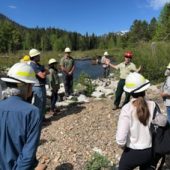
In this Q&A, Journal of Sustainability Education (JSE) senior editor Amanda Bielawski interviews Cora Kammeyer, research associate at the Pacific Institute, a California-based non-profit research organization focused on global water challenges. Together, they discuss the role of sustainability education, specifically within the corporate sector, in achieving water resilience in the midst of a changing climate in California and beyond. Following a discussion of California’s water challenges, this piece explores how the California Water Action Collaborative (CWAC) brings together corporations, including Coca-Cola, Google, and Proctor & Gamble, with NGOs such as The Nature Conservancy, WWF, and the Environmental Defense Fund, to engage in collective action and drive corporate water literacy. The interview explores, in part, why the corporate sector is “one of the biggest and most important levers for achieving global water security.”
Continue Reading
The Flint water crisis, considered one of the worst public health crises of our time, continues to have devastating and irreversible impacts for residents six years in the making, from 2014 to present. The understanding and awareness of this public health crisis is vital in order to comprehend the impacts of poor urban management and the human right to clean water in the nation’s marginalized and poor communities. This article will document the context of the Flint water crisis and the Dakota Access Pipeline using photography as an immersive storytelling medium to humanize the issue. Additional stories, including those of Indigenous youth water activist Autumn Peltier and Flint youth activist Mari Copeny, document innovative ways in which we can contribute to a more informed society. Educators provide various ways to integrate the themes of environmental justice, water accessibility, sustainability, and climate change across multiple subject areas.
Continue Reading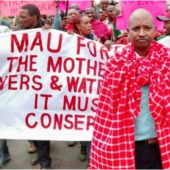
Abstract: This article posits that Maasai Indigenous activists’ call to save Kenya’s Mau Forest Water Tower for its ability to protect downstream water security has emerged as an environmental-policy microcosm illustrative of globally surging interest in such Nature-Based Solutions (NBS). Through an analysis of the Mau Forest issue, a series of United Nations Development Programme case studies, and increasing inclusion of NBS for water at recent global policy events such as the United Nations General Assembly and World Economic Forum, this article suggests that a new water infrastructure policy paradigm appears poised to increase implementation of NBS-informed by Indigenous and Traditional Ecological Knowledge (ITEK). The potential of this paradigm shift is illustrated by the North American Indigenous Mi’kmaq concept of Two-Eyed Seeing, which encourages the synthesis of solutions from both western-emanating Scientific Ecological Knowledge (SEK) and ITEK on a path toward positive social-ecological outcomes.
Continue Reading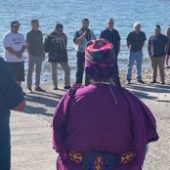
An Indigenous salmon re-joining ceremony on the dammed Columbia River inspires a broader understanding of the potential for human participation in healthy natural systems.
Continue Reading
Abstract: Part Two of a two-article series describes water conservation through graywater use and rainwater harvesting. Sustainable methods of heating water for a recirculating shower, and potential methods for water filtration and purification are presented. Also addressed is the feasibility of sustainable showering alternatives. An opportunity for educators and students to collaborate in the development of an off-grid recirculating shower is provided as well.
Continue Reading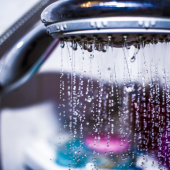
Abstract: Part One of a two-part article outlines a brief history of showering and questions current showering practices. Current global levels of water use and availability are discussed, plus water use in the United States, relative to Americans’ frequency of showering. The energy requirements for cities to provide clean water is outlined as well as the carbon dioxide emissions that are subsequently released during water delivery and wastewater disposal. In Part Two, water conservation through graywater use and rainwater harvesting is described, and sustainable methods of heating water are offered. Possible methods for water filtration and purification are presented. The feasibility of alternatives for a more sustainable shower is addressed. Both articles conclude with an invitation to students and instructors to collaborate with the author to construct a prototype of an off-grid recirculating shower.
Continue Reading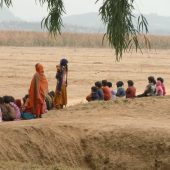
Access to fresh water is every individual’s universal and human right, and it is a key instrument in meeting the sustainable development goals given the important social, economic, and political roles that this natural resource pertains to. But the reality is that millions of people across the globe are suffering because water resources are diminishing. World leaders, researchers, and journalists, have gone as far as to say that water scarcity will be the next probable cause for world conflict (Molen & Antoinette, 2005). Yet issues regarding the insufficiency of water are not talked about extensively in the world, and the planet turns a blind eye to the global water crisis, assuming it to be a renewable natural resource that nature will keep on recharging. But the truth is, that human demand for ecological resources has been exhausting resources faster than the nature has the capacity to replenish them, and if human habits and unsustainable use of resources do not change than global resource crisis, like the present global water scarcity crisis, will surely intensify and become the leading cause for conflicts (Shahid, 2016). One major cause for the lack of mainstreaming of the water crisis is because of its portrayal as a stand-alone issue to the general public, owing greatly to the lack of world governments and their inability to contextualize it as a multi-dimensional problem. This paper highlights the crucial need for adopting a multi-dimensional approach for the dissemination of the problem. It follows an exploratory stance and sheds light on the multipronged social challenges and resulting vulnerabilities associated with water challenges in Pakistan.
Continue Reading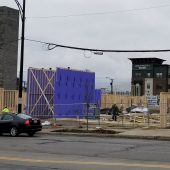
Youngstown State University, an Urban Research Institution located in Youngstown, Ohio (Mahoning County), has experienced significant infrastructure improvements over the last several years. The improvements center around new dormitories, academic buildings and parking areas located to the south of the campus. Prior to these additions, the improved areas were parking lots, grass and tree areas and other structures that were subsequently demolished to make room for the infrastructure improvements. Due to the aforementioned activity, the storm water patterns, drainage and quantities were increased causing storm water runoff accumulations and significant ponding on Rayen Avenue and Belmont Avenue which meet at the south end of campus.
This situation is not abnormal. Every urban area that is revitalized with new buildings and parking structures undergoes a significant change in storm water runoff patterns and areas of drainage or groundwater recharge. At Youngstown State University, there has been no known attempt to quantify the amount of change (increase) of runoff from the original conditions to the current. The focus of this research will be two – fold. First, to find accurate quantities of runoff (pre and post development improvements) and expand on sustainable storm water management techniques that can be incorporated in urban areas including bioswales and rain gardens. Second, to include a group of sophomore engineering technology students in a meaningful, real world engineering technology analysis project similar to what they will be completing while practicing. (storm water, runoff, drainage, mapping)
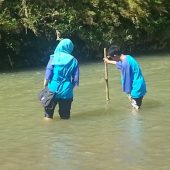
Water cycle literacy attracts great attention to the observers of climate change. Local and global impacts of the water cycle threaten human life and damage the Earth. Education is expected to be able to provide a way out of this problem. A Conservation-Based Learning (CBL) model was employed to understand the water cycle literacy among students in three cities in East Java province, Indonesia. There were 6 (six) Senior High Schools with a total number of 396 students serving as the sample. Each school consisted of common classes and CBL classes. Water cycle literacy aspects included knowledge, values, cognitive behavior, and acting behavior. The data were analyzed using a descriptive quantitative, and qualitative approach. The data were analyzed using a descriptive quantitative, and qualitative approach. The literacy aspect of values, attitudes, thinking, and acting skills in the water cycle in the CDL class is higher than that of the common class. Learning the water cycle using the CBL model gave significant effects on the students’ strengthening of water cycle literacy (sig. 0.5).
Continue ReadingThis is a media review of Dr. Wallace Nichols’ (2014) text Blue Mind: The Surprising Science That Shows How Being Near, In, On, or Under Water Can Make You Happier, Healthier, More Connected, and Better at What You Do—with a specific focus on the book’s perspectives on the connections between water and climate change. The review describes the book as a sentinel text, noting that “its related summits have similarly set the stage for continued dialogue and research on our preference for water and the unique qualities that proximity to water has on our overall wellness.” The review specifically illustrates the ways in which the book “offers readers important strategies for dealing with the emotional challenges associated with climate change as well as suggests important insights into climate advocacy.”
Continue Reading
In this Q&A, Journal of Sustainability Education senior editor Amanda Bielawski interviews Diana Virgovicova, recipient of the 2019 Stockholm Junior Water Prize (SJWP). Virgovicova was among the SJWP recipients who recently issued a joint statement to the United Nations (UN) General Assembly that focused on the urgent need for water action, recognizing its intricate links to climate change. Rooted in the praxis framework, the joint statement focused on the critical role sustainability education, specifically, must and will play in turning scientific knowledge about the water-climate connection into actual action through policy change and other means. In this interview, Virgovicova underscored this point: “Education is the way to solve the water-climate sustainability crisis. We need to get more people involved. I think it is regrettable that environmental education is not a required assessment in schools.”
Continue Reading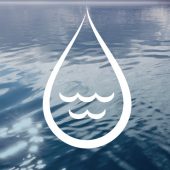
Journal of Sustainability Education senior editor Amanda Bielawski sits down with Megan Schufreider, director of education for the California Academy of Sciences to discuss how climate change is creating more demand for water-related curricular resources, with a specific emphasis on the importance of teaching about virtual water footprints. The Q&A interview concludes with a list of water-related curricular resources, including various water footprint calculators, available to both educators and the public.
Continue ReadingStudents need to possess accurate conceptions of both Earth’s climate and water systems due to the ramifications of climate change. Using computer-based simulation models gives students practice making and testing hypotheses and conveying comprehension. Gaps exist in the availability of climate change courses and opportunities to use computer-based model both at the introductory level. This case study presents the use of a computer-based model over three iterations of an introductory water course. Data came from student assignments and interviews (n=129). Results of quantitative and qualitative data analyses show that students, regardless of gender, year in school, or major, can effectively apply the Water Balance Model (WBM) to the investigation of climate and groundwater variables. In concert with a flipped course format, students gain experience using the WBM to make decisions surrounding humans, climate, and water to explore the interconnectivity of systems.
Continue Reading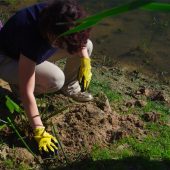
Anthropogenically-induced water quality issues are plaguing the people and environments of Southwest Florida. In 2018, nutrient-rich runoff into waterways caused one of the largest and longest occurring algal blooms in the area; however, many were unaware or misinformed about the causes or impacts of these blooms. Young people are at the forefront of this changing environment and will continue to face water reliance issues in the years to come (Leal, et al., 2015). However, gaps within the existing science curriculum do not address the anthropogenic actions that are leading to these crises (National Research Council, 2012). Southwest Florida is being drastically altered by the large number of people who move to the area each year; urban sprawl, habitat loss, and human-induced climate change are impacting the region (McVoy, et al. 2011). Local water quality issues necessitate a more focused, specific effort to build awareness and knowledge to ensure clean and safe water is locally available. Therefore, the need for Environmental Education (EE) is becoming increasingly important for students to be able to make informed decisions about personal actions contributing to these issues. The project, Future Leaders of Water Quality (FLOW) focused on educating teachers and students by engaging them in environmental literacy, specifically focused on water quality education in local middle schools. Project FLOW worked with local teachers to develop an innovative, five-day, lesson plan focused on the causes and implications of anthropogenically-induced eutrophic conditions. Data were collected throughout the implementation to measure the impact of the curriculum intervention that addressed water quality issues of the region. The results of the study suggest exposure to the lessons increased student understanding of water quality issues and motivated students to take personal action to improve water resiliency within their local communities.
Continue Reading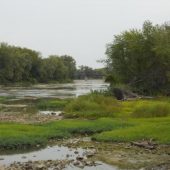
Formal educational models are overemphasizing standardization and therefore underestimating the benefits of place. Place-based education is under researched within the field of educational studies and this article attempts to tackle this divide. This article unpacks the definition of place-based education while exploring its relevance to virtually any educational situation. Additionally, a framework for application of place-based education is offered. The proposed framework is supported by a description of its benefits. The idea of a watershed is used to further contextualize the discussion. Recognizing the importance of maintaining the health and integrity of our watersheds is a vital part of a strong sustainability-oriented education program. The reverence and respect for a watershed must be embedded within an ethic which embraces the value of all life on this planet and place-based education is one way to cultivate this reverence and respect.
Continue ReadingThe Egyptian city of Cairo has a long history of charitably endowed water fountains, called sabils, that form an integral part of the urban landscape by offering drinking water to passersby. The local knowledge of sabil keepers and users in Cairo offers perspective into the value of centering ethical frameworks in conversations about water resilience. As global climate change has manifested in cities in the Middle East, urban dwellers, particularly those with the fewest resources, face mounting problems with water insecurity. This paper examines how two communities in Cairo are using sabils to modify their built environment to better serve their water needs and contextualizes the ways in which religion and systems of reciprocity are integral to these local processes. This article examines the knowledge contained in the sabil practices of marginalized urban communities through the educational strategy of ethnographic research in a joint faculty-undergraduate team.
Continue Reading